Linking current research to running
By Nikki Reiter
I’ve been doing daily runs lately with my baby in the jogging stroller. I can say that these runs sure do make me appreciate the days when I get to go solo. Don’t get me wrong, I love hearing my baby sing and chat along in her very own language with the rumbling of the stroller. However, as a biomechanist, I’m plagued with always thinking about my form – and subsequently how it changes with the stroller.
While it definitely seems harder to run with the stroller, I had to find out what the research was saying. I can’t believe it took me until now to investigate further.
I could only find two publications related to this topic. A 2012 publication reports that ratings of perceived exertion (RPE) are higher when running with a stroller. This study tested running on an indoor track, finding no difference in VO2 (amount of oxygen taken in and subsequently used to run), but an increase in heart rate (HR) and RPE. When running outdoors on a paved greenway, VO2 and RPE increased compared to running without a stroller, but HR remained similar.
A 2005 study reports on both biomechanical and physiological adaptations made when running with a stroller. They found that physiological variables related to fatigue were significantly higher when running with the stroller, however gait parameters did not change. The aspect I found most applicable from this study was that participants ran at 75% VO2max – more than a jog!
I also found an abstract from a conference proceeding from the 1991 International Symposium for Biomechanics in Sport. It highlighted a lot of the biomechanical variables I fear are changing with my stroller running. While the paper doesn’t appear in a peer-reviewed journal, it has some information that can allow us to be aware of maintaining proper form. From this paper, I present the results as ‘reminders’ for keeping your form in check while running with a stroller:
- average velocities decreased
- stride lengths shortened
- stride rates increased
- greater forward lean (may put the runner at greater risk for lower extremity injury and compromise the respiratory position)
- decrease in hip angle
- decrease in range of motion of the arms and elbows
- restriction of the pumping action of the arms (may cause a possible decrease in velocity and an increased demand on the work of the legs)
There’s what I call some ‘anecdotal controversy’ out there surrounding the question of ‘one hand or two?’ Holding onto the stroller with two hands results in rotating the upper body less, which means the lower body has to rotate more to compensate. Personally, I find I need two hands when navigating any kind of turns or divets, but on straight, level ground, I like to play around with just using the one hand to push and the other to swing freely.
A final comment: I have to admit, when I take away the added resistance of the stroller, my solo ‘easy’ pace has definitely quickened by about 15-20 sec/km. Alas, the benefits seem to be adding up!
—
Nikki Reiter is a Biomechanist and certified NCCP Performance Coach in Endurance Running.
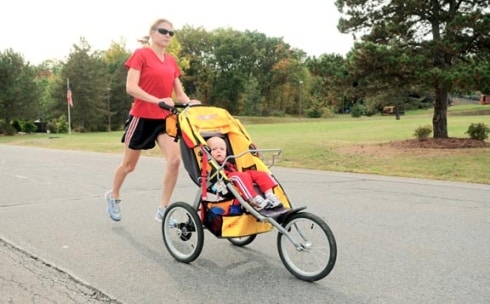
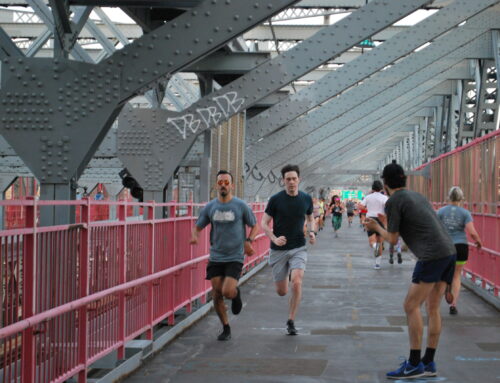
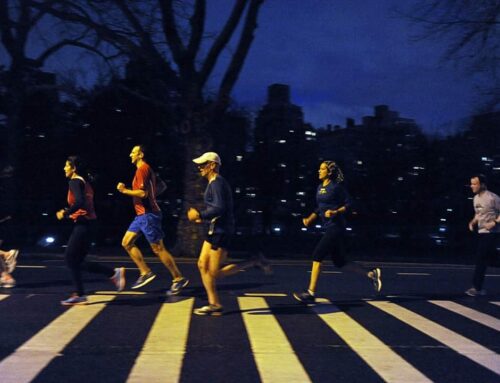
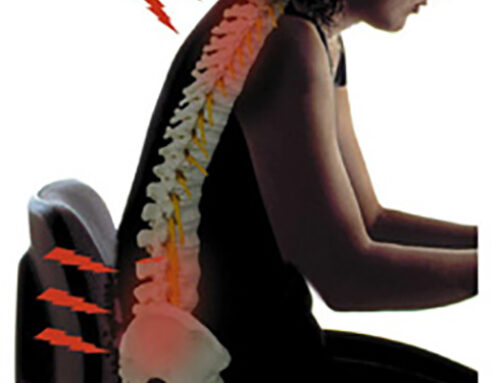
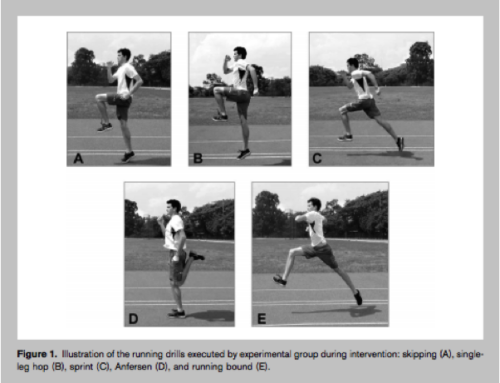
Leave A Comment